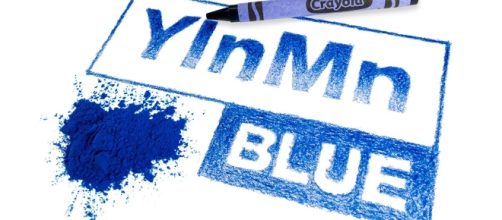From the ancient pharaohs of Egypt to the Han dynasty in China to the Celts of Ireland, and so many more, the search for the perfect shade of Blue has haunted societies worldwide for hundreds of years. The next contribution to such a quest is from Mas Subramanian, an Oregon State University chemistry professor, and his team. All on accident. They gained their fifteen minutes of fame back in 2009 when Subramanian’s lab inadvertently discovered a new pigment of blue, which was dubbed YInMn Blue. But now, Crayola is in the process of making that color into their new crayon.
This is how the world’s newest blue pigment was accidentally created, by the way: https://t.co/6L7C6IQrlE
— Creators (@CreatorsProject) May 31, 2017
How was the new color discovered?
One of Subramanian’s grad students, Andrew E. Smith, combined the chemicals yttrium, indium, and manganese oxides into a furnace, heating it up to 2000 degrees Fahrenheit. Out from the fire the team pulled out a bright blue substance. Much like Louis Pasteur and Alexander Fleming, who accidentally created a vaccine to chicken cholera and accidentally created penicillin, respectively, this discovery was not intentional. Subramanian is a professor of materials science, and was supposed to be working with students to manufacture new materials that could be used in electronics.
In an interview with NPR, Subramanian said, “People have been looking for a good, durable blue color for a couple of centuries,” knowing right away that he had stumbled on to something big. The last time a new blue pigment was discovered was in 1802 by a French chemist Louis Jacques Thenard—the color cobalt blue.
What is a pigment?
“Color is a part of a spectrum, so you can't discover a color,” said Subramanian in the same interview. “You can only discover a material that is a particular color.” A pigment is a material that absorbs certain parts of the color spectrum and reflects others. The color spectrum is red, orange, yellow, green, blue, and violet. Sound familiar? It should be—they’re the colors of the rainbow.
YInMn blue absorbs red and green wavelengths, and reflects blue wavelengths in a certain manner that people perceive as bright blue.
Future of YInMn blue
Immediately after Subramanian and Smith, along with fellow OSU chemistry professor Arthur Sleight, filed to patent the YInMn material, along with publishing a paper on their new discovery in the Journal of the American Chemical Society. The material is currently in the process of being tested by the FDA to make sure it is safe and that it isn't toxic, but so far all is going well. It is a very stable color, and reflects heat more than cobalt blue, says Subramanian.
The Shepherd Color Co. has done testing on the pigment, and has found that YInMn can endure oil, water, and sunlight better than other blues.
Once the Environmental Protection Agency gives the all clear on the pigment, Shepherd can start distributing it commercially for everyone to enjoy.
How is Crayola involved?
"We strive to keep our color palette innovative and on-trend,” said Smith Holland, CEO and President of Crayola, in a press release, “which is why we're excited to introduce a new blue crayon color inspired by the YInMn pigment.”
What would you name the new blue? Submit your name ideas & enter for a chance to win! → https://t.co/h6tHHzXAlH pic.twitter.com/qHihRnsCMh
— Crayola (@Crayola) May 28, 2017
The name YInMn doesn’t exactly roll off the tongue, and Crayola has a solution for that: a competition to name the new color. They will be taking submissions until June 2nd, and on July 1st the top 5 names will be announced.
Then public voting will begin. The new blue will replace the yellow Dandelion crayon, which Crayola just retired this past March. While they are voting on the name of this new crayon, no such vote was given regarding which crayon was to retire.
As long as the color is deemed safe, one thing is for sure--the art world is going to be feeling the effects of this new discovery for years to come.


